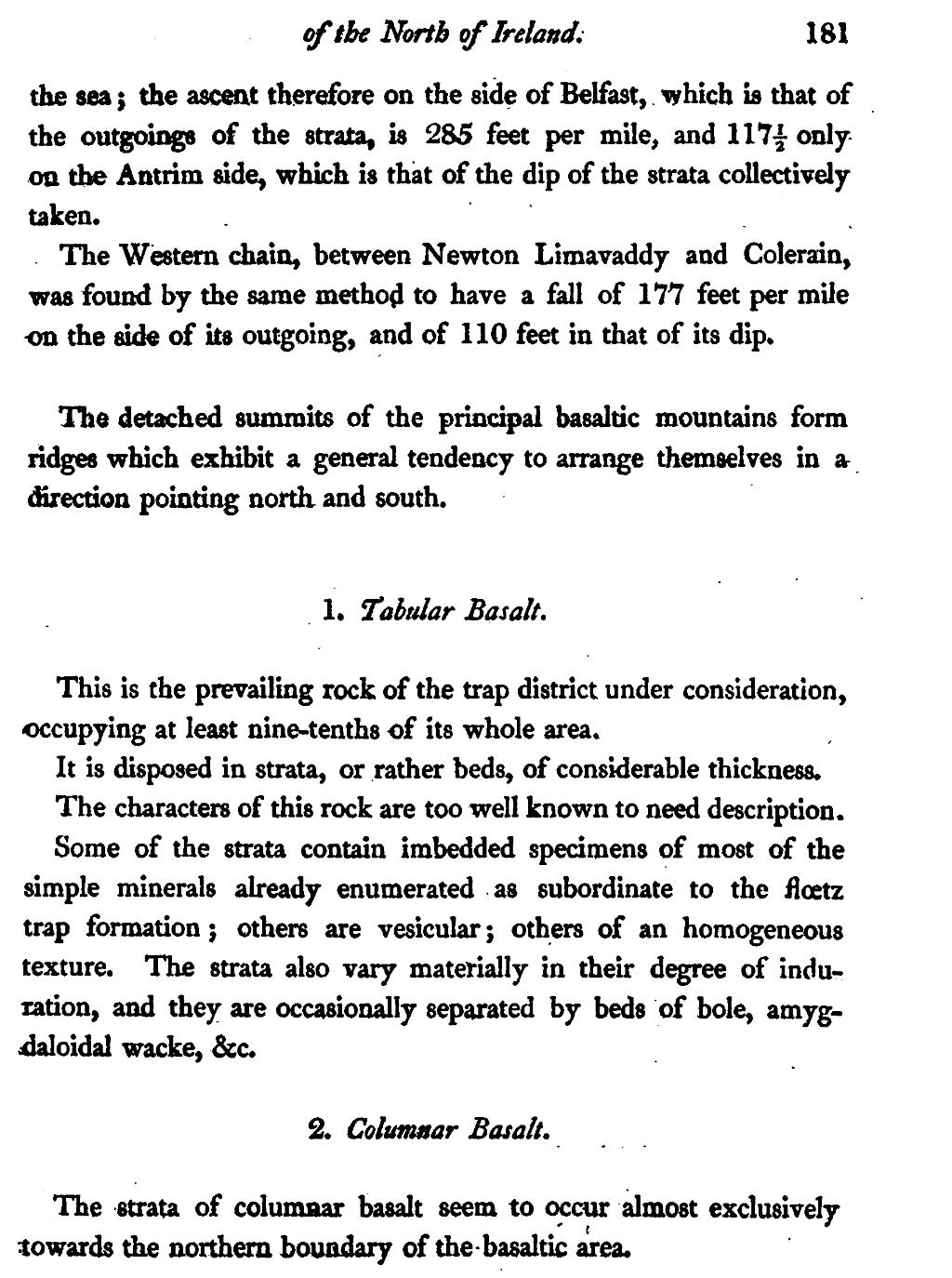the sea; the ascent therefore on the side of Belfast, which is that of the outgoings of the strata, is 285 feet per mile, and 117 only on the Antrim side, which is that of the dip of the strata collectively taken.
The Western chain, between Newton Limavaddy and Colerain, was found by the same method to have a fall of 177 feet per mile on the side of its outgoing, and of 110 feet in that of its dip.
The detached summits of the principal basaltic mountains form ridges which exhibit a general tendency to arrange themselves in a direction pointing north and south.
1. Tabular Basalts.
This is the prevailing rock of the trap district under consideration, occupying at least nine-tenths of its whole area.
It is disposed in strata, or rather beds, of considerable thickness.
The characters of this rock are too well known to need description.
Some of the strata contain imbedded specimens of most of the simple minerals already enumerated as subordinate to the flœtz trap formation; others are vesicular; others of an homogeneous texture. The strata also vary materially in their degree of induration, and they are occasionally separated by beds of bole, amygdaloidal wacke, &c.
2. Columnar Basalt.
The strata of columnar basalt seem to occur almost exclusively towards the northern boundary of the basaltic area.

